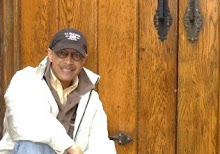
In occidental cultures and the northern hemisphere, snowmen are considered a symbol of Christmas and winter for many, and they often appear on Christmas cards. The construction of snowmem dates back to at least the Middle Ages, when in Europe every new snowfall would have townsfolk making snowmen on the streets (according to old diaries and chronicles) and has always been an activity of children, however, many adults participate in making snowmen too.
It is nearly impossible to build a snowman out of any type of snow other than packing snow. Packing snow is formed when regular powder snow comes near its melting point and becomes moist and compactible. This allows for the construction of large balls of snow by simply rolling a ball of snow until it grows the desired size. Attempting to make a snowman out of powdered snow is extremely difficult since it will not stick to itself. And if packing snow is not rolled into snowballs before it freezes, it will form an unusable denser form of powdered snow called crust. Thus the best time to build a snowman is usually in the next warmest afternoon directly following a snowfall with a sufficient amount of snow.
The common trend is to then dress the snowman, usually with rocks, wood sticks, and vegetables. Carrots are often used for the nose, as are coal for eyes. Some like to dress their snowmen in clothing (scarves, jackets, hats). Dressing a snowman in clothing insulates the snowman by keeping out the heat, which means a longer life for the snowman. However, some may prefer not to risk leaving supplies out doors where they could easily be stolen if someone were so maliciously inclined. Also, snowmen usually melt quite quickly on a hot day, which could cause clothing to become stuck under melting ice if not removed promptly.
There are variations to these standard forms. These other types range from snow columns to elaborate snow sculptures (similar to ice sculptures).
Now, how about some snowman jokes!
What happened when the snowgirl fell out with the snowboy ?
It is nearly impossible to build a snowman out of any type of snow other than packing snow. Packing snow is formed when regular powder snow comes near its melting point and becomes moist and compactible. This allows for the construction of large balls of snow by simply rolling a ball of snow until it grows the desired size. Attempting to make a snowman out of powdered snow is extremely difficult since it will not stick to itself. And if packing snow is not rolled into snowballs before it freezes, it will form an unusable denser form of powdered snow called crust. Thus the best time to build a snowman is usually in the next warmest afternoon directly following a snowfall with a sufficient amount of snow.
The common trend is to then dress the snowman, usually with rocks, wood sticks, and vegetables. Carrots are often used for the nose, as are coal for eyes. Some like to dress their snowmen in clothing (scarves, jackets, hats). Dressing a snowman in clothing insulates the snowman by keeping out the heat, which means a longer life for the snowman. However, some may prefer not to risk leaving supplies out doors where they could easily be stolen if someone were so maliciously inclined. Also, snowmen usually melt quite quickly on a hot day, which could cause clothing to become stuck under melting ice if not removed promptly.
There are variations to these standard forms. These other types range from snow columns to elaborate snow sculptures (similar to ice sculptures).
Now, how about some snowman jokes!
What happened when the snowgirl fell out with the snowboy ?
She gave him the cold shoulder !
What do snowmen wear on their heads ?
Ice caps !
What do snowmen eat for lunch ?
Icebergers !
Where do snowmen go to dance?
Snowballs !
How do snowmen travel around ?
By iceicle !
What sort of ball doesn't bounce ?
A snowball !
How do you know when there is a snowman in your bed ?
You wake up wet !
What do you get if cross a snowman and a shark ?
Frost bite !
How do you call an Eskimo cow ?
An Eskimoo !
When you stop laughing, here's a poem that won't melt:
Meanwhile, Here In Haiku
Begin with a duration of gray. One dearest memory.
Body tapestry called tattoos. A needle or hay stack.
A cool breeze. Night's occasional motionlessness.
Wind that ruffles leaves. The data found in a street
sign. Dust or ashes. Ditches or graves. A newspaper
full of fish scales. Flooded basements. Spiders in
an attic. Or maybe try heaven without description.
A paddle but no canoe. A canary but no coal mine.
Splashes of bright colors. Textures that resemble
wool. White oleanders. Yellow roses. A dark suit and
a tie. A ringing phone . Anything that could be called
habitual. Or just death that knows not how loud it knocks.
Poem first published at: http://www.thetimegarden.com/
Visit my ezine: http://www.concelebratory.blogspot.com/
and music blog: http://www.medleymakersant.blogspot.com/
Copyright 2007 by Maurice Oliver. All Rights Reserved.
Begin with a duration of gray. One dearest memory.
Body tapestry called tattoos. A needle or hay stack.
A cool breeze. Night's occasional motionlessness.
Wind that ruffles leaves. The data found in a street
sign. Dust or ashes. Ditches or graves. A newspaper
full of fish scales. Flooded basements. Spiders in
an attic. Or maybe try heaven without description.
A paddle but no canoe. A canary but no coal mine.
Splashes of bright colors. Textures that resemble
wool. White oleanders. Yellow roses. A dark suit and
a tie. A ringing phone . Anything that could be called
habitual. Or just death that knows not how loud it knocks.
Poem first published at: http://www.thetimegarden.com/
Visit my ezine: http://www.concelebratory.blogspot.com/
and music blog: http://www.medleymakersant.blogspot.com/
Copyright 2007 by Maurice Oliver. All Rights Reserved.


No comments:
Post a Comment